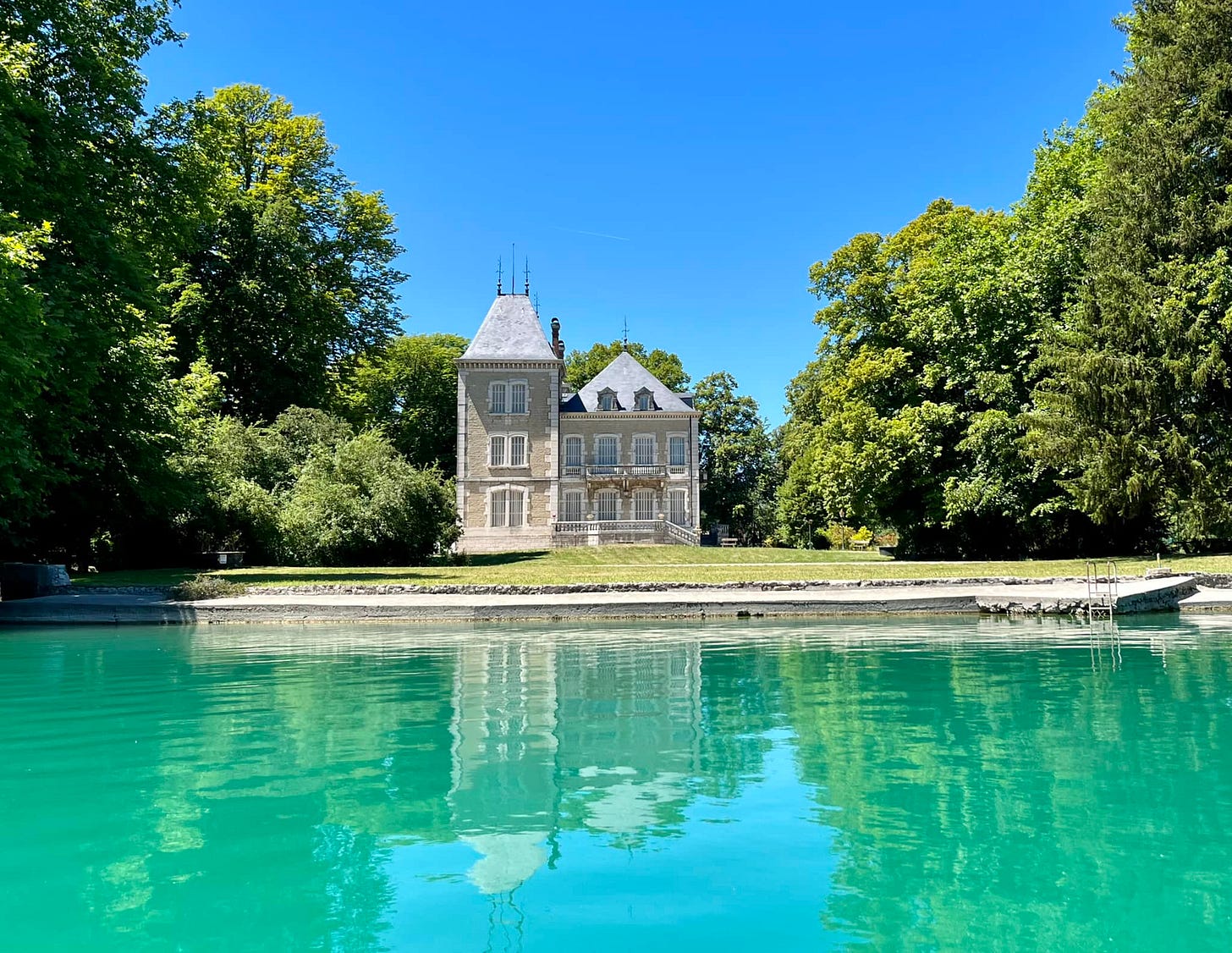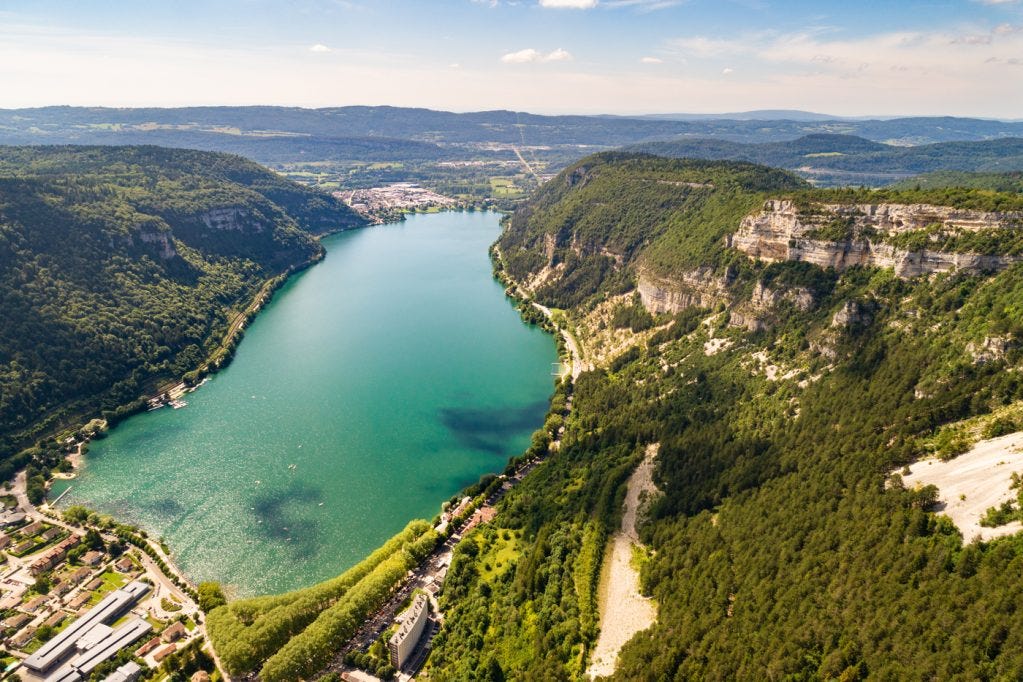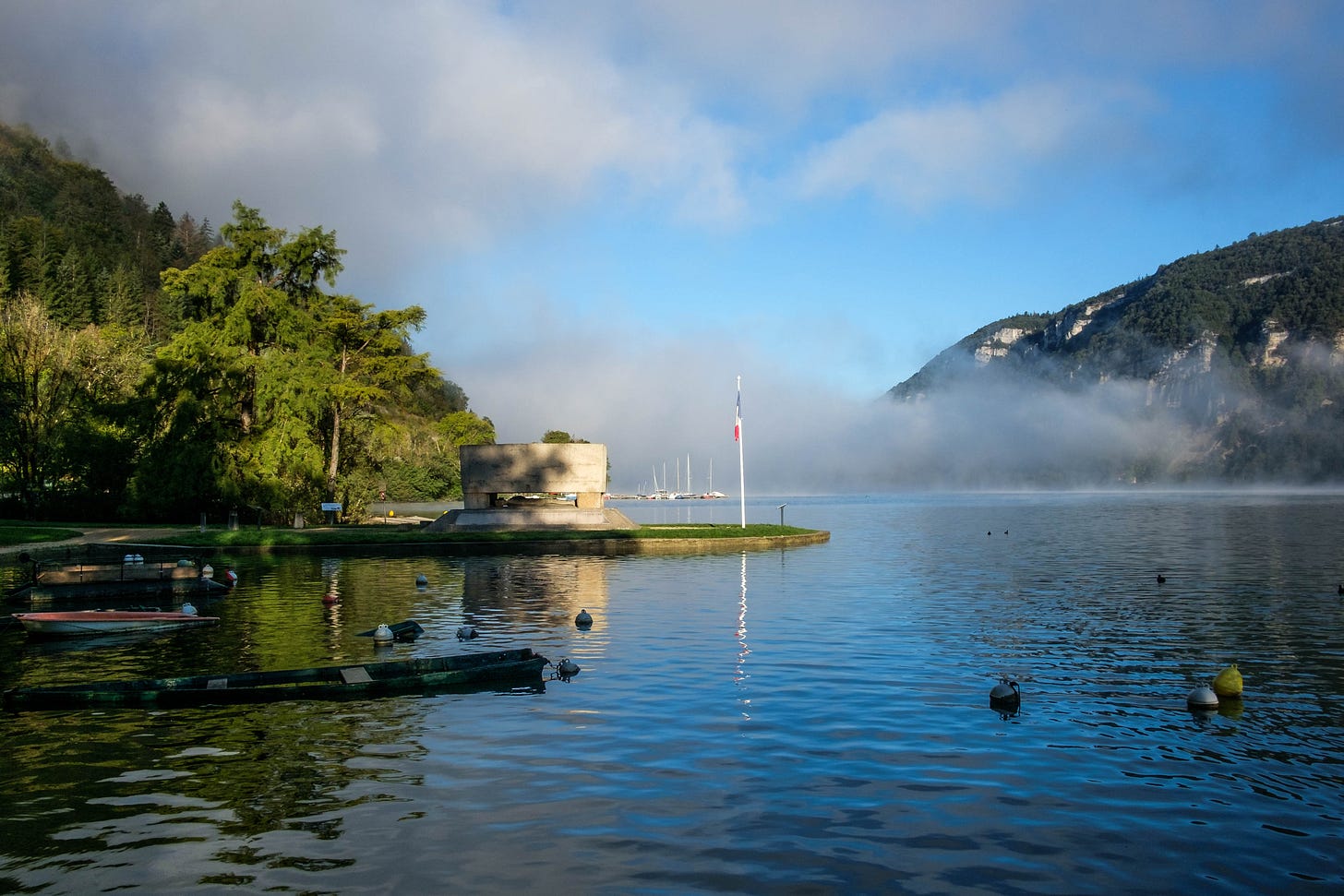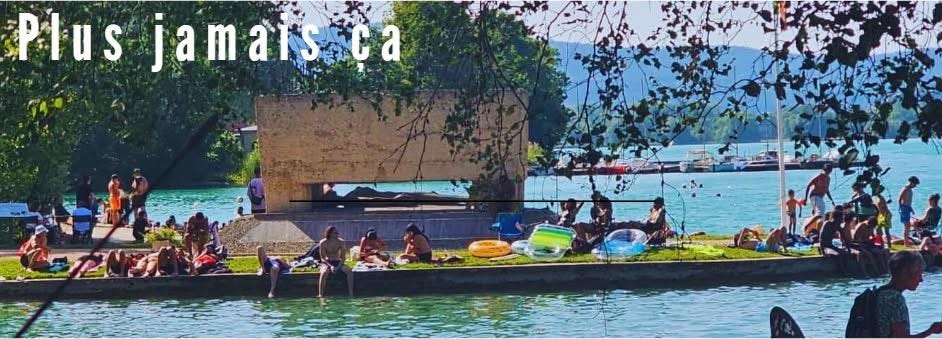You may have noticed a lot of people are talking about the weather at the moment. Searing heat, forest fires, soaring temperatures, desperate humans panting for relief. It’s what a proper English gentleman might describe as “quite warm” – and it was the English who invented the weather, after all. It’s the first thing any of us ever talk about, after we’ve said “hello”.
The French are less obsessive about the weather, unless of course it threatens local onion crops or forces the closure of beret factories. But the current heatwave has come as a nasty shock to our nearest town, Nantua, the proud custodian of one of our region’s greatest treasures: its ravishingly beautiful but previously mostly undiscovered lake.
For as many summers as I can remember (three - maybe four) I have devoted myself to intensive study of the balmy waters of the Lac de Nantua. On a variety of inflatable devices (most recently a giant avocado) I have floated across many of its 350 aquatic acres, marveling at my luck in living next door to the perfect antidote to summer heat.
With an iPhone encased in a waterproof pouch, I have photographed the lake’s emerald sheen, its waterfront chateau (above), its grebes, mergansers, coots, wagtails, dragonflies and seagulls, its stunning setting encased by soaring cliffs. It’s truly a natural paradise – quite possibly the loveliest spot in France that no-one has ever heard of. I was so overcome by its beauty one day not long ago that I let slip my iPhone in its waterproof pouch. It sank slowly to the bottom of a lake that is one of France’s deepest. There it rests in peace, 43 metres below the surface, unreachable by goggles and flippers and Find my Phone apps.
I’ve replaced my iPhone only to find that the lake as we knew it is also lost.
The Lac de Nantua is suddenly famous.
An energetic promotional campaign by the town’s well-meaning mayor has proved a roaring success. Tourists are flooding to the lake from the sweltering metropoli of Lyon and Geneva; from Holland, Belgium, Luxembourg and Germany and even, occasionally, from England.
Last weekend, according to Mayor Jean-Pascal Thomasset, 12,000 visitors thronged the narrow shores of the lake, fleeing the miseries of ‘la canicule’ – the heatwave. The resident population of Nantua is roughly 3,500. The town is under siege.
A little history: for most of the 20th century Nantua was a shabby backwater, best known as a disastrous traffic bottleneck for travellers heading to the Alps from Paris, Lyon and beyond. Giant HGVs arriving from Italy via the Mont Blanc tunnel would belch their way up and down Nantua’s two main thoroughfares, staining the pastel facades of shops and homes a uniform shade of diesel smudge.
Then they built a motorway bypass, a stunning engineering feat that drilled a tunnel through the southern cliffs, emerging further down the valley on an elevated section named by then-President Francois Mitterrand as the Autoroute des Titans. It is truly a titanic stretch of road, winding through the Jura foothills towards Geneva with spectacular views of the lakes and forests it passes.
Nantua’s traffic problems were sharply reduced, but the town was no longer on anyone’s way to anywhere. Shops shuttered, people moved away. Its cheap rents proved attractive mainly to Turkish immigrants. When we first arrived in the area 25 years ago, Nantua seemed a relic in terminal decay.
It wasn’t all empty grimness. The town boasted – and still does – an excellent museum devoted to the history of the region’s resistance to Nazi occupation. The hills around us were home to the Maquis, the earliest and bravest and ultimately most effective of the threadbare French warriors who took the fight to the Germans, often at terrible cost to local communities ravaged by Nazi reprisals.
Most of all, though, Nantua had its lake. The main problem was access to the water; the main road runs along the northern shore (right side, photo above), a railway line that now supports TGVs hugs the southern side. There was room for a tiny pebble beach and a wider lakeside swimming area, both close to the town. A small park next to the chateau at the western end of the lake also offered some sunbathing space.
Then there were the well-kept local secrets: a pair of public spaces squeezed between the railway line and the water, accessed through a small village at the opposite end of the lake (top of photo of lake above). This has been our summer base for years. A diving jetty, steps to the water, grass for sunbathing, flaunting our tans at passing TGVs. Who needs St Tropez?
It was inevitable that word would get out, and sure enough, the lake began to appear on national television travel programmes, usually entitled “Hidden France” or “Where to get away from the crowds this summer”. The internet did what the internet does and our lake went viral, God help us.
The mayor was initially thrilled. Lots of visitors spending money in Nantua’s shops! But things haven’t quite worked out as planned. The overcrowding has become a problem. Tourists turn up with barbecues and picnics. They don’t bother with the shops and leave their rubbish behind. The town hall is raking in revenues from its new parking meters, but many visitors try at all costs to avoid them, turning the entire area into a weekend guerrilla parking lot.
Worst of all last weekend, a lakeside memorial (above) to those deported by the Nazis to concentration camps in Germany became just another space for stripping off and slapping on the sunscreen. Visitors were photographed (below) soaking up the sun on the tomb of the unknown deportee. Some of Monsieur Thomasset’s older voters were horrified.
Salvadori Philippe lamented the loss of “the Nantua of our youth….the Nantua of today makes us sad”. Pierre Bellotto added: “I fear the worst for July”. Others noted that the mayor’s attempts to promote his town many have backfired. “They’ve opened the champagne but it’s going to be very difficult to put the cork back in the bottle”, another resident grumbled.
Monsieur Thomasset has called a crisis meeting with the area’s sub-prefect to discuss safety and security issues. The town has hurriedly hired half a dozen lifeguards to patrol its newly-packed swimming areas. “Without government help we’re not going to be able to handle this number of visitors,” Thomasset announced.
Luckily there’s one safe place that remains mercifully free from crowds: the middle of the lake. I launch my avocado, and the hubbub quickly fades. I suspect, too, that relief may be on the way faster than the mayor might have hoped.
La canicule is on its way out. The forecast for the next weekend is a 65% chance of rain. Or as the English might put it: summer at last!












A tale for our times. Travel writers everywhere are in search of hidden places that no one else knows about, with the result that, very soon, they are thronged with tourists. We must pray for rain.